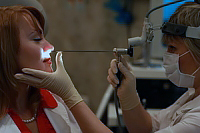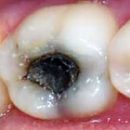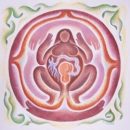Causes of development and types of chronic pharyngitis. Factors contributing to the development of chronic pharyngitis. Treatment of diseases of the mucous membrane of the pharynx.
Content
 Abstract: Chronic pharyngitis is an inflammatory disease of the pharynx and develops against the background of weakened immunity. In children, as a rule, it has an infectious nature, caused by the influenza virus, staphylococcus, streptococcus, pneumococcal or adenovirus. Chronic pharyngitis in adults is most often associated with professional activities. Treatment is based on an integrated approach that allows eliminating the hearth disease and reduce the risk of re-exacerbations.
Abstract: Chronic pharyngitis is an inflammatory disease of the pharynx and develops against the background of weakened immunity. In children, as a rule, it has an infectious nature, caused by the influenza virus, staphylococcus, streptococcus, pneumococcal or adenovirus. Chronic pharyngitis in adults is most often associated with professional activities. Treatment is based on an integrated approach that allows eliminating the hearth disease and reduce the risk of re-exacerbations.
Chronic pharyngit — The disease affecting the mucous membrane of the pharynx and diffuse the mucous glands and lymphadendic granules. It may be as a consequence of a non-healous acute pharyngitis, as well as an independent disease that arose with a long irritant effect on the mucous membrane of the pharynx. It is characterized by the phase of exacerbations and remission.
Causes of the disease
Source of the disease — A variety of pathogenic bacteria that accumulate in crypts and a parenchyma of lymphadendic formations of the pharynx and nasopharynx and are activated after weakening the local fabric immunity of adenoviral infection. The cause of the development of chronic pharyngitis can be sinusitis and rhinitis, as well as a chronic form of tonsillitis and adenoiditis. Its development contributes to the disease of metabolism, hemodynamic disorders occurring in the upper respiratory tract, and predisposition to various diseases of the mucous membrane of the upper respiratory tract. Provoke stagnant phenomena in the upper respiratory tract leading to hypontime and hypoxia of their internal structures, maybe kidney, lungs, liver and cardiovascular system.
Provoking factors
The development of the disease contributes to the factors leading to the affix of the tissues of the upper respiratory tract:
- sharp temperature fluctuations;
- hot dry air;
- dusty atmosphere;
- pairs of substances possessing pronounced oxidizing, oxidative and toxic effect;
- smoking;
- abuse of alcohol drinks;
- spicy dishes;
- Frequent use of hot drinks and dishes.
Types of chronic pharyngita
The infection of the nasal cavity is forced to oral respiration, negatively affecting many tissue processes in the throat. It often leads to disorders of local tissue metabolism, drying the protective mucosa layer, disruption of cellular home-source and weakening local immunity. These factors, in different ways acting on different components of the mucous membrane, lead to different types of pathological changes and the development of the disease in various forms.
Depending on the prevalence and depth of the lesion of the mucous membrane, the following types of chronic pharyngitis distinguish:
- Catarial — It is a total inflammation of the pharynx, including the nasophack mucosa, the hearing pipe and the output ducts of the front incommary sinuses. It is often found in childhood due to the significant development of the lymphaded apparatus in which the infection accumulates. Adults meet less often because this device is partially atrophied.
- Hypertrophic — accompanied by hypertrophy (growth) lymphoid tissue pharynx and mucous membrane to form a folded surface.
- Atrophic — accompanied by thinning mucous membrane.
Symptoms of the disease
 Chronic pharyngitis exhibits itself with a temperate rhinestone, cough, difficult-scale viscous discharge and increased vomiting reflex when the crust is clusted. The most pronounced symptoms in the morning hours.
Chronic pharyngitis exhibits itself with a temperate rhinestone, cough, difficult-scale viscous discharge and increased vomiting reflex when the crust is clusted. The most pronounced symptoms in the morning hours.
How to recognize pharyngitis
With pharyngoscopy on the mucous membrane of the rear wall of the pharynx and soft nose, viscous mucous deposits are viewed, which are hardly separated by a tweezers. The hyperemia of the mucous membrane is enhanced in the cold season, the number of mucous drugs increases, they become more liquid. When infected with the pharynx by bacteria or adenoviruses, the mucous membranes acquire purulent character. Increases body temperature, headache and signs of moderate intoxication appears.
Treatment
Treatment of chronic pharyngitis is based on an integrated approach, includes a number of measures:
- elimination of a local focus of inflammation;
- purification from excess mucus of respiratory tract;
- Increase in general and local immunity.
A comprehensive approach allows to successfully eliminate the hearth disease and reduce the risk of repeated exacerbations of the disease.
The basis of treatment is the anti-inflammatory and immunomodulatory phytotherapy, appointed individually. Physiotherapy (heating) and reflexotherapy (point massage, moxotherapy and acupuncture) are also applied, contributing to the efficiency of primary treatment.









